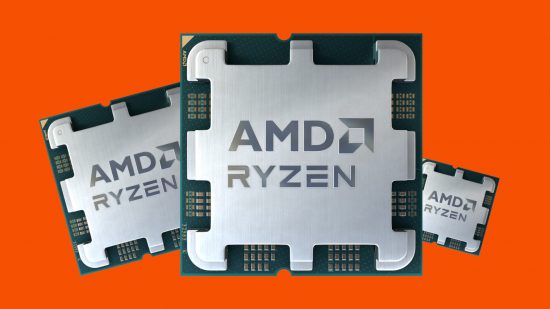New details have come to light about AMD’s plans for future CPUs, with the latest rumors claiming that the AMD Zen 6 specs will include not two, but three types of cores. AMD is already using two types of Zen 4 core in some of its latest Ryzen CPUs, and Intel has both P-Cores and E-Cores, but this is the first time we’ve seen a third type of AMD core mentioned.
Naturally, we expect at least some AMD Zen 6 processors to find their way onto our best gaming CPU list when they’re eventually released. However, given that the AMD Zen 6 launch window is a long way in the future, we should expect other chips to hold the line against competitors until then.

News of a third core type comes by way of YouTuber Moore’s Law Is Dead (MLID) who, speaking to claimed sources at AMD, claims that Zen 6 CPU cores will split into three variants: Standard, Dense Classic, and Client Dense.
According to MLID, the ‘Standard’ and ‘Dense Classic’ cores are most closely related to the Zen 4 and denser Zen 4c cores seen in desktop processors such as the Ryzen 5 8500G and some mobile APUs. For those unfamiliar with Zen 4c cores, they’re not like the E-Cores found on Intel CPUs like the Core i5 14600K, and are instead identical to their full-fat siblings in terms of instructions per clock (IPC). However, they take up less die space, have less L3 cache at their disposal, while also featuring lower clock speeds.
Meanwhile, ‘Client Dense’ reportedly aims to push the density even further. According to MLID, these cores could be “40-50%” smaller, but the channel didn’t specify whether this was relative to ‘Standard’ or ‘Dense Classic’. Thanks to all those fast-switching transistors packed densely together, MLID does claim that these chips would have higher operating temperatures and lower power efficiency than the other two types of core, though.
These categories could refer to specific processor families rather than core types, but given that AMD is already combining Zen 4 and 4c cores in its processors, it’s likely we’ll see the same approach taken for Zen 6. As ever, the final technical makeup of the architecture is still subject to change, though, so everything mentioned above needs to be taken with a healthy pinch of salt.
MLID had some other Zen 6 details to share too, claiming that the architecture’s design is expected to be “locked in” around Q3 2024. All being well, this could allow AMD to launch its Zen 6 processors as early as Q4 2025, similar to the back-to-back yearly release we saw from the company when Zen 3 succeeded Zen 2 back in 2020.
We concur with MLID that a 2026 release seems more likely, though, particularly given that Zen 5 is expected to launch later this year. However, Intel Arrow Lake could spur AMD to move up its plans to maintain its lead, should the Core Ultra 200 series prove competitive.
Finally, MLID also shared some small details on Zen 7, which is allegedly codenamed ‘Prometheus’, continuing the Greek mythology theme established by Zen 6 (codenamed Medusa). This architecture is also reportedly more efficient than prior generations across all clock speeds, but it’s still too early to say anything with certainty.
For more on Zen 6 check out our guide on all the latest rumors, which includes the latest word on its iGPU. For those in search of a great processor now, though, give our Ryzen 7 7800X3D review a read.
